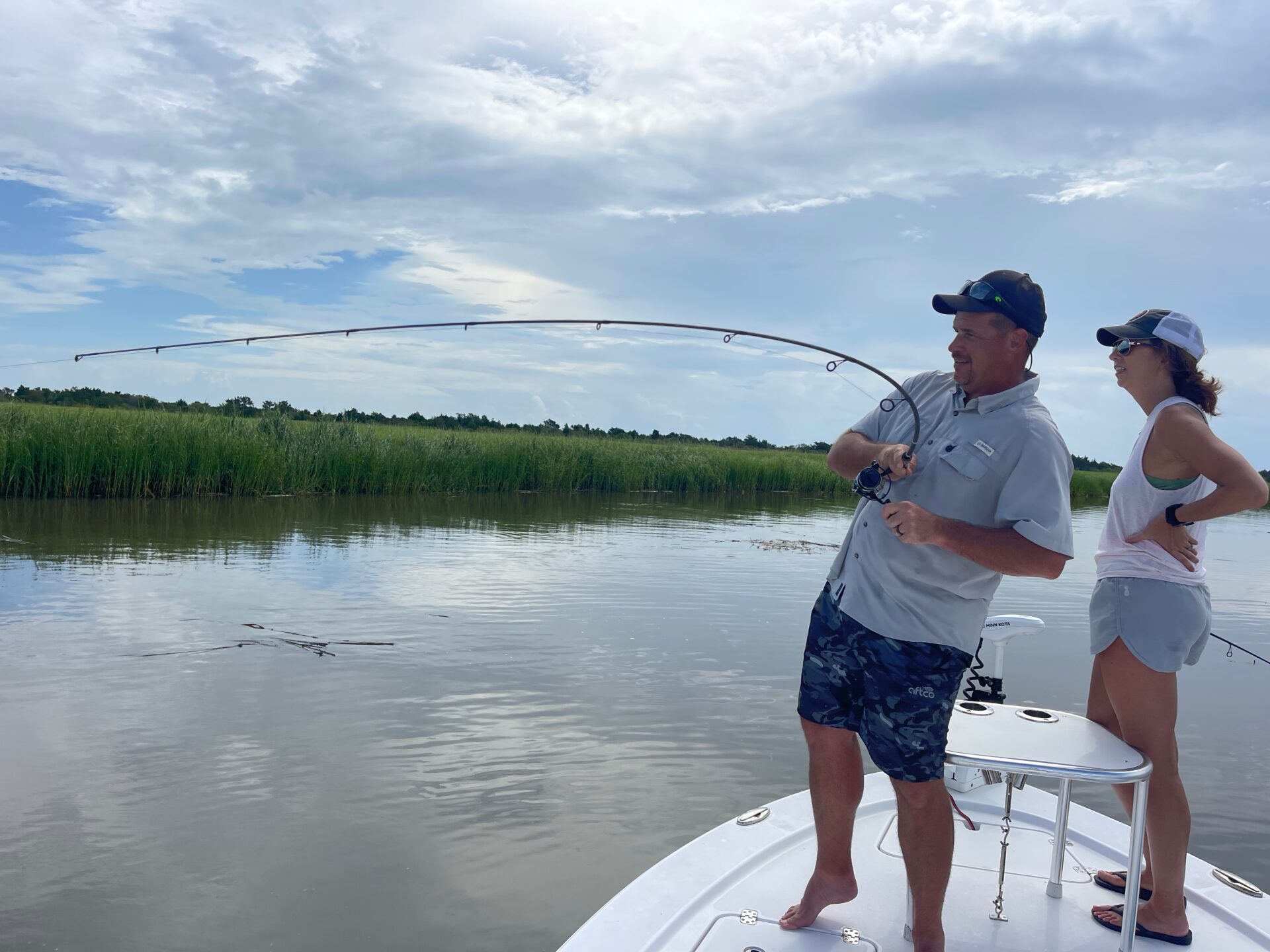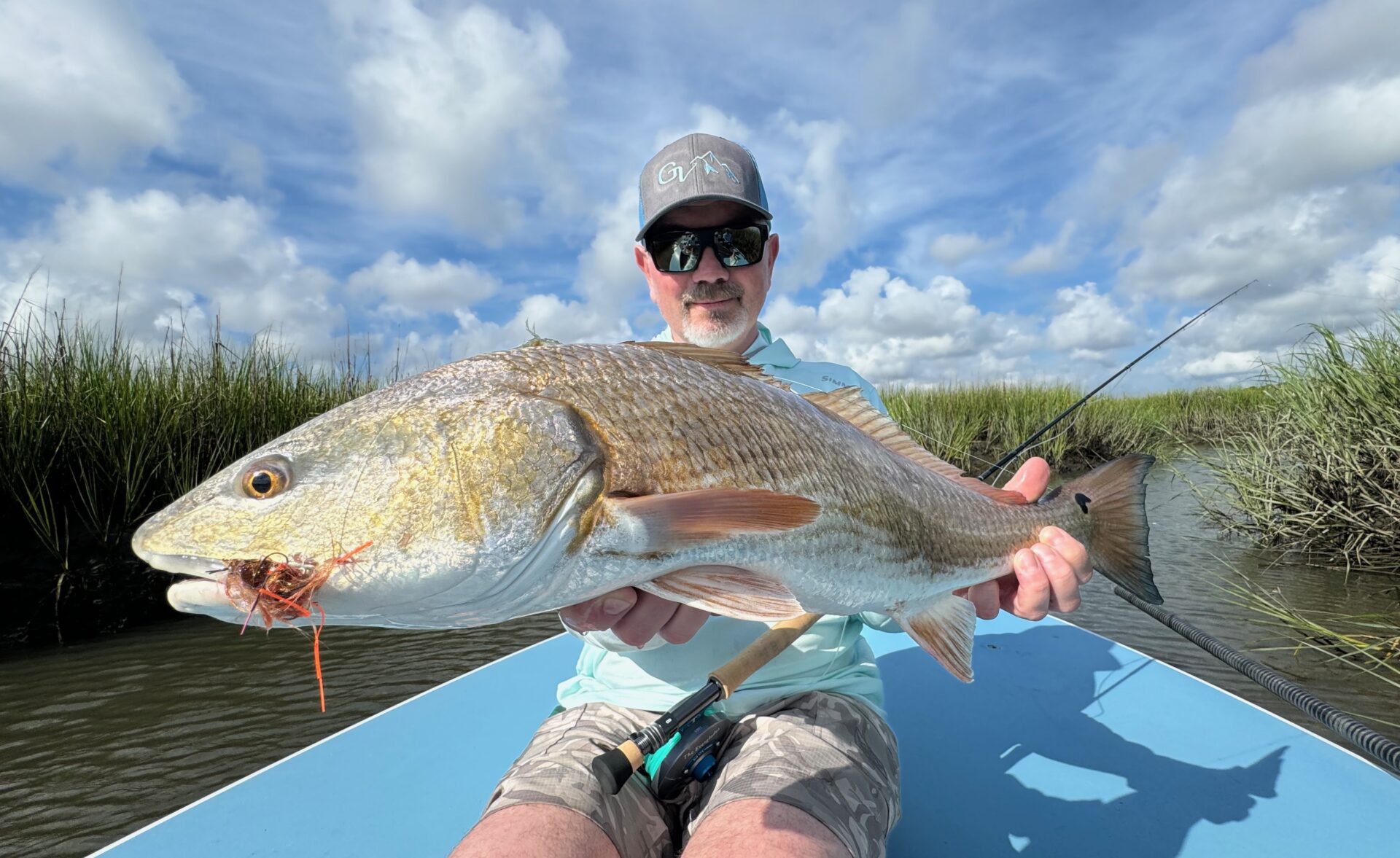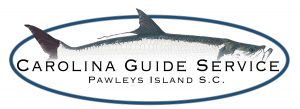Last Updated on April 9, 2025 by Eric Bonneman
Redfish, or red drum, are heavy-bodied, schooling fish that thrive in the shallow coastal waters of the South Carolina lowcountry. They have a broad head, a downturned mouth built for rooting along the bottom, and a tail that almost always carries one or more dark spots near the base. Unlike fast-moving predators that chase their prey, redfish are ambush feeders. They pin bait to the bottom, crush crabs and shrimp with blunt teeth, and feed most confidently when the water is moving.
Early summer is a dependable window to target them. The water is warm but not overheated, and bait is steady. Shrimp, small mullet, and juvenile crabs are present in the surf and inside the marsh. The fish follow, setting up in structure-driven locations that are reachable on foot or by boat if you know what you’re looking for. This is when the patterns start to hold; fish are no longer scattered by spring shifts and not yet pushed off by heat.
Seasonal Behavior and Fish Location
Redfish in early summer act with purpose. They move with bait, ride tides predictably, and stick close to features that concentrate food. This makes it easier to target them day after day, provided you match the tide to the location.
In the surf, they run the troughs and bar breaks where current pulls baitfish across uneven bottom. These areas are most productive during a rising tide that covers structure but still keeps redfish in reach. When they move in, they move into shallow water, close to the first trough where the current stirs up the bait.
Inside the marsh, redfish set up near points, shell edges, and feeder creeks. When water is high, they’ll slip into flooded grass to hunt crabs and shrimp. You’ll see them tailing or pushing water just inches deep. On the drop, they return to deeper cuts, waiting near drains for bait to spill back into the main channel. These habits are reliable. If the tide is moving and the bait is visible, redfish are rarely far.

Access Strategy
Surf Access
Redfish move into the surf to feed. Look for points, creek mouths, and gaps in outer bars. Fish the rising tide and get there before the water fills all the way in. The first trough, especially on smaller tide swings, can hold fish that push up to feed and pull back quickly. Bring only what you need. Surf fishing works best when you’re moving. If the cut dies, find another.
Flats Access
Use a small skiff to reach grasslines, shell flats, and hard-bottom edges that hold fish on higher water. Get into the area early on the tide and pole or drift quietly. Watch for fish pushing water, tipping in the grass, or blowing up bait. They’ll be spread out but visible. Keep your distance. Redfish in flooded grass are jumpy.
Interior Creek Access
On the outgoing tide, redfish drop into creeks, bend corners, and current seams where bait is forced through narrow water. These are ambush spots. Approach with the current, ease into position, and hold quietly. Anchor well off the fish if you can and cast to the edges. The bite here is about timing. If you’re early, wait. If you’re late, move.
Gear Selection
- Rod: Medium or medium-heavy spinning rod, 7′ to 7’6″
- Reel: 3000 to 4000 size with a smooth drag
- Mainline: 15 to 20 lb braid
- Leader: 20 to 30 lb fluorocarbon, 2 to 3 feet
Rigging
- Carolina rig for current-fed bottom fishing in creeks or along surf edges
- Fish-finder rig for long-distance casting and bait-holding in deeper surf troughs
- Weedless rig for working soft plastics through grass or oyster-studded flats
- Jighead rig for pitching artificial baits near structure or into creek mouths
Bait and Lure Use
Natural Baits
- Cut mullet: Reliable scent bait for surf and moving creek water
- Shrimp (live or fresh dead): Versatile and effective in both clear and stained water
- Blue crab (quartered): Tough bait that holds up around shell and draws larger fish
Keep natural bait where fish are already hunting. In surf or current, let it hold position without unnecessary movement. In flats or quiet water, lighten up the rig and let the scent pull fish to you.
Artificial Lures
- Paddle tails: Work them steady or with short hops. Best used when baitfish are visible or when redfish are cruising near open sand pockets or submerged grass. They perform well during mid-tide stages when fish are moving but not pinned into structure.
- Shrimp imitations: Drag or bump them along the bottom, especially in areas with scattered oyster shell or defined grasslines. These work best in slower current or when fish are staged around creek mouths or deeper cuts waiting on the drop.
- Topwater plugs: Use early or late in the day, when light is low and water is calm. Focus on flats with clean bottom or gentle taper. Avoid using them in wind chop or fast-moving water; they rely on visibility and surface disturbance to trigger strikes.
Choose lures based on the structure you’re fishing, the speed of the water, and how visibly fish are tracking bait. Adjust retrieval speed to match the tempo of the tide and avoid overworking the bait. Let the behavior of the fish guide what stays tied on.

Adapting While Fishing
Conditions rarely line up exactly how you want. Redfish may be present, but their behavior won’t always match the setup you’ve brought to the water. In these moments, knowing what to change and when matters more than simply staying put and hoping.
Start by watching the water. If bait is flicking but you’re not getting strikes, change where you’re standing before you change anything else. Shifting your cast angle or moving up or down current can make the difference. If redfish are tracking your bait but not committing, swap out size or scent. Cut bait often triggers more response than live when the bite is cautious. If water clarity drops or the tide slacks off, look for structure that forces movement, such as drains, wind-blown points, or tighter cuts. Still water won’t hold feeding fish long.
Pay attention to how redfish behave, not just where they are. Fish that spook off a cast need a softer approach. Fish that hang close to structure might need a slower presentation or more lead time on the cast. The more you adjust based on what you’re seeing, the less guesswork there is between bites.
At Carolina Guide Service, we specialize in providing fishermen with unforgettable experiences along South Carolina’s coast. Our local, experienced guides know the best spots, and we provide all the gear, knowledge, and expertise needed for a successful day on the water. Book a trip with us today and make your next fishing adventure one to remember!
